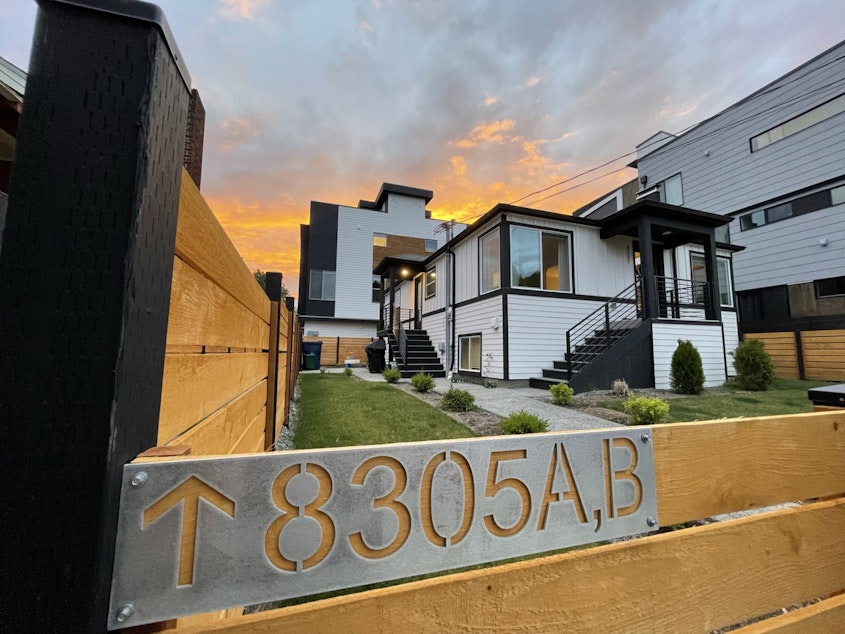How will Seattle's next comprehensive plan shape the city?

Seattle Mayor Bruce Harrell has a plan for the next decade of the city's growth, but he'll need the City Council's stamp of approval first.
Every ten years, Seattle drafts a map for how and where the city will grow. It's called the One Seattle Comprehensive Plan. Harrell's office released his vision for the next ten years earlier this month.
Since the city's 1994 comprehensive plan, Seattle has funneled growth into "urban villages," which accommodate denser growth thanks to buildings with between three and eight stories. Meanwhile, low-density neighborhoods have been relatively unchanged.
Over the last decade, over 80% of all new development has happened in "urban villages," like Northgate, Lake City, the Central District, and Rainier Beach. But it’s been difficult for the city to keep up with growth in these limited corridors.
RELATED: Housing Density: What we're missing without a middle option
Sponsored
"At a basic level, we have a housing shortage," said Jesse Simpson, the government and policy manager at the Housing Development Consortium. "We need more abundant housing to make it more affordable for everyone. We have not allowed housing growth to keep up with job growth over the past two, three decades."
The mayor's new comprehensive plan adds new designations, including "neighborhood centers," which include residential areas like Maple Leaf, and "regional centers," which have multistory towers, like downtown Seattle and the University District.
The city expects the mayor's proposed plan to pave the way for at least 100,000 new housing units over the next 20 years, or 5,000 new homes per year.
Read Harrell's plan below.
One Seattle Plan Draft Plan 2024
Sponsored
But Simpson said that the city will likely need more homes than that to make a dent in the housing shortage.
"We've been producing somewhere between 7,000 to 12,000 homes per year, and even that level has been insufficient to keep up with job growth," he said.
According to the city, 100,000 units is just a baseline. Plus, the plan is still in its draft phase. The city will hold open houses over the next two months to discuss the draft.
(You can comment on the draft comprehensive plan, known as the One Seattle Plan, here.)
"We are almost 800,000 people today. And we know that, given our projections, we will be over a million people within the next 20 years," said Rico Quirindongo, director of Seattle's Office of Planning and Community Development. "What that means is is we have to plan for that density and that growth."
Sponsored
This is also the first comprehensive plan since the state legislature passed a pivotal piece of legislation: the "missing middle housing" bill, House Bill 1110.
That mandate allows for quadplexes and, in some cases, sixplexes in single-family zones in larger cities across the state, including those areas outside of Seattle’s urban centers.
RELATED: Seattle's first affordable housing high-rise tower in 50 years welcomes its first residents
Quirindongo said 75% of Seattle is single-family zoning. Those single-family zones accommodate up to three units, a primary residence plus two accessory dwelling units.

Sponsored
Simpson said the mayor's proposed implementation of the "missing middle" law doesn't include incentives for developers to actually add more units in low density neighborhoods.
"It doesn't actually allow for more square-footage to be developed. So, you're just allowing a developer to put in one additional home inside the existing allowable box," Simpson said. "In practice, it's not a real sea change in terms of what can happen in Seattle neighborhood residential areas."
Quirindongo admitted that the move from three to four units isn't a "big leap."
RELATED: Will Seattle's new growth plan produce enough housing for newcomers?
"I do understand that there's folks that want to see us do more than that. And that's where we are, in this proposal: suggesting greater density along transit corridors, at transit oriented development sites, plus this proposal to do higher density at 24 neighborhood center nodes across the city," he said. "There are areas of the city that we do want to introduce greater levels of density, but we want to do it with a measured approach."
Sponsored
Listen to Soundside’s full conversation with Rico Quirindongo and Jesse Simpson by clicking the play icon at the top of this story.


